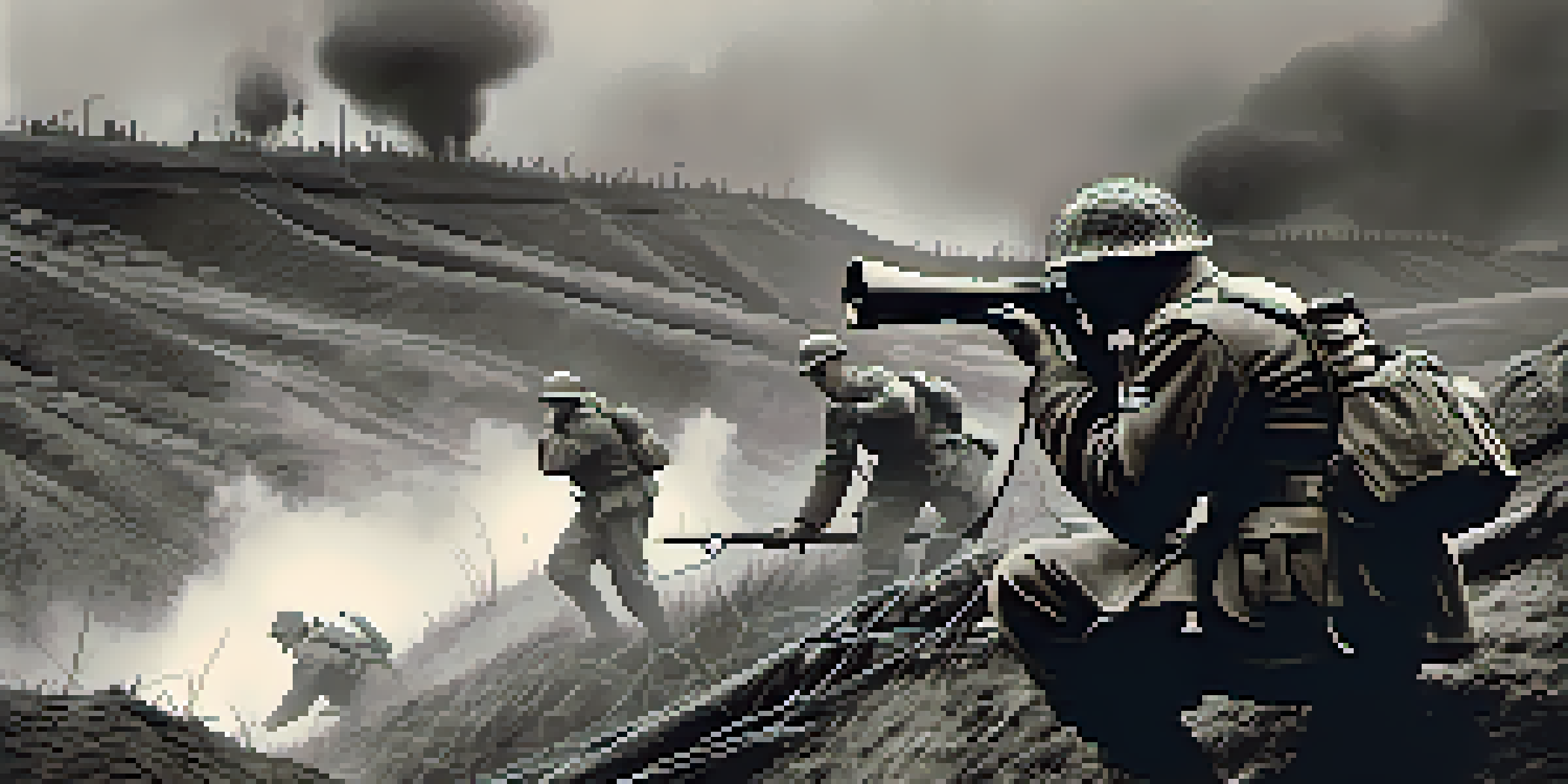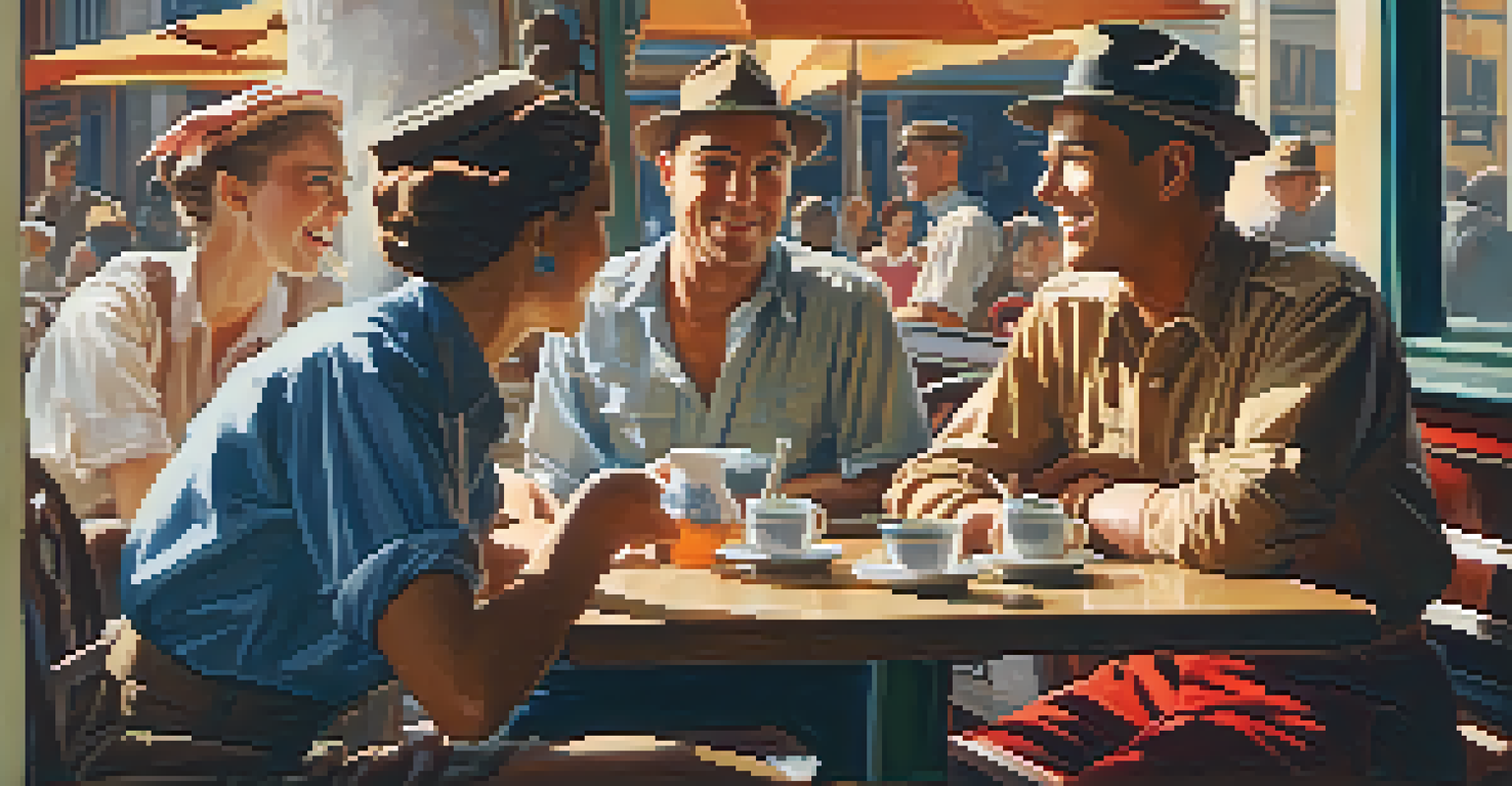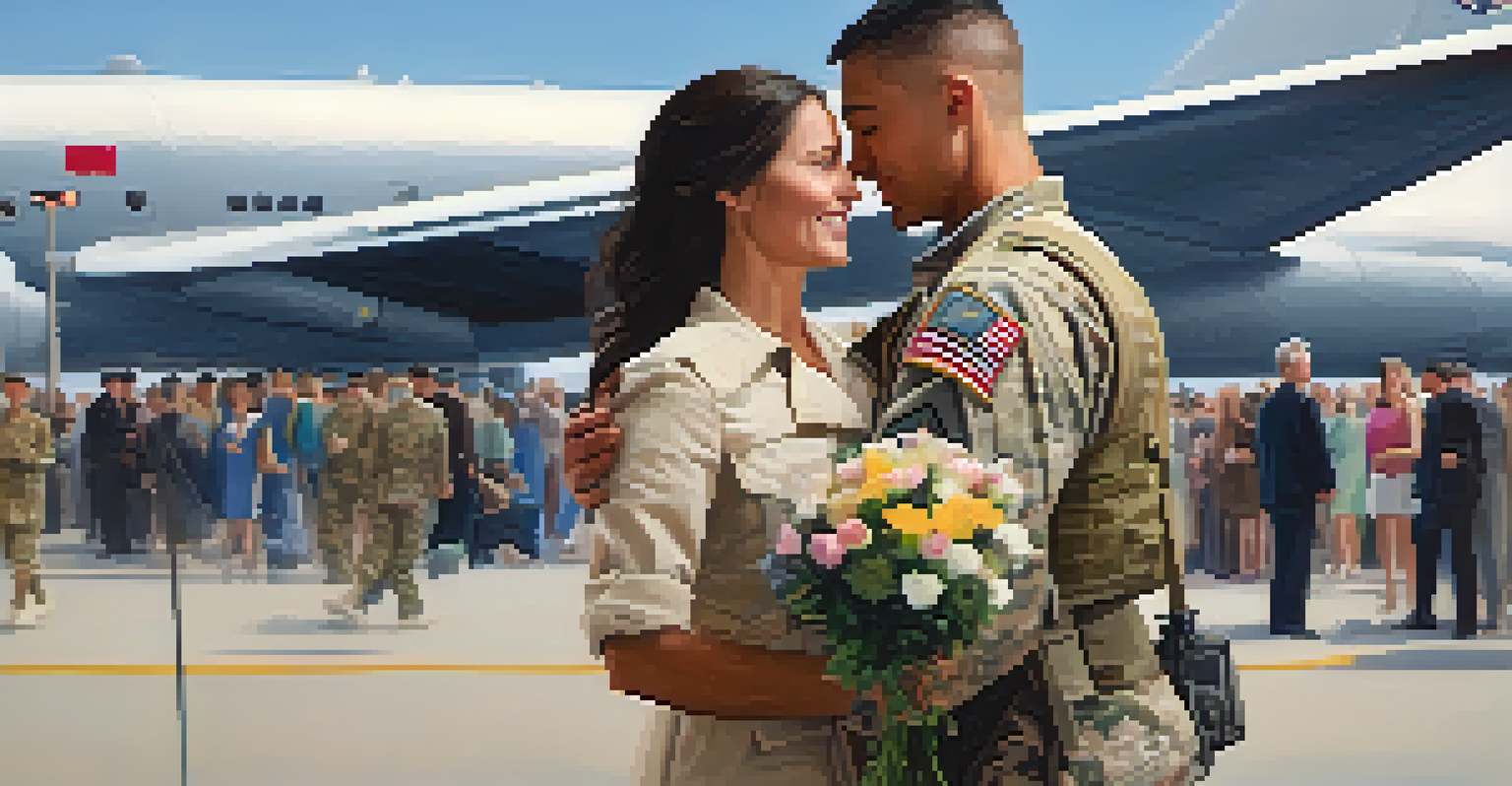The Evolution of War Representation in Film History

The Silent Era: War in the Shadows
In the silent film era, war was often depicted through dramatic visuals, using powerful imagery to convey the chaos and emotion of battle. Movies like 'The Birth of a Nation' (1915) showcased the Civil War, albeit with a controversial narrative that emphasized certain perspectives over others. The absence of sound meant filmmakers relied heavily on visual storytelling, often romanticizing the heroism of soldiers while glossing over the grim realities of war.
The cinema is a mirror of society. It reflects our values, our dreams, our fears, and our conflicts.
This period set the stage for how audiences would perceive conflict on screen, as the lack of dialogue allowed for a more interpretive experience. The imagery was striking; battles were portrayed with grandiosity, creating a sense of spectacle that captivated viewers. However, this also meant that the complexities of war were often simplified, leading to a skewed understanding of the historical events being depicted.
As technology progressed, filmmakers began exploring more nuanced representations of war, although the silent era laid the groundwork for future narratives. The focus on heroism and valor would evolve, paving the way for more critical portrayals in the years to follow, especially as sound was introduced and filmmakers could convey deeper emotional contexts.
World War I: A Turning Point in War Cinema
World War I marked a significant shift in how war was represented in film, moving from glorification to a more somber reflection of the human experience. Movies like 'All Quiet on the Western Front' (1930) starkly illustrated the horrors of trench warfare, emphasizing the psychological toll on soldiers. This film, based on Erich Maria Remarque's novel, presented a raw and unfiltered look at the brutality of war, challenging the romantic notions that had prevailed earlier.

The graphic depictions of battlefield carnage and the sense of futility resonated deeply with audiences, fostering a new understanding of war's impact. This shift was crucial, as filmmakers began to recognize their responsibility to portray the realities of conflict more accurately. The emotional weight of these films encouraged viewers to empathize with soldiers, humanizing them rather than simply presenting them as heroes.
War Films Reflect Societal Change
Throughout film history, war narratives have evolved to mirror changing cultural values and attitudes towards conflict.
This era also saw the emergence of documentary-style filmmaking, further blurring the lines between fiction and reality. As filmmakers sought authenticity, they began using real footage alongside dramatized narratives, creating an immersive experience that would influence future war films significantly.
World War II: The Rise of Propaganda Films
World War II brought about a surge in propaganda films, as governments sought to rally public support and boost morale. Movies like 'Casablanca' (1942) combined romance with themes of resistance, serving both as entertainment and a tool for political messaging. These films often depicted the Allies heroically standing against tyranny, reinforcing national pride and unity.
War is never a solution; it is the problem. And we must find a way to resolve our conflicts without resorting to violence.
While many films celebrated the heroism of soldiers, they also began to explore the complexities of war, including the moral dilemmas faced by individuals. This duality allowed filmmakers to navigate the fine line between glorifying war and critiquing its devastating effects. The portrayal of diverse characters, including women and minorities, began to expand, reflecting the changing social landscape of the time.
As the war came to a close, the cinematic landscape began to shift again, paving the way for more critical analyses of war in the post-war era. The legacy of these propaganda films would linger, influencing how future generations would view both the conflict itself and the role of cinema in shaping public perception.
The Cold War Era: Complexity and Dissent
As the Cold War unfolded, filmmakers began to tackle the complexities of modern warfare, including the ethical implications of nuclear conflict. Movies like 'Dr. Strangelove' (1964) used satire to critique the absurdity of nuclear war, showcasing a shift in tone that reflected societal anxieties. This era saw a rise in films that questioned authority and the justification of war, encouraging audiences to think critically about the reasons behind conflict.
The portrayal of soldiers also evolved, with characters often depicted as flawed individuals grappling with moral dilemmas. This new perspective allowed for a deeper exploration of the psychological impact of war, as seen in films like 'Apocalypse Now' (1979), which delved into the madness of the Vietnam War. Such narratives broke away from traditional hero archetypes, offering a more nuanced view of those affected by war, both on the battlefield and at home.
From Glorification to Realism
The portrayal of war in films has shifted from romanticized heroism to more realistic and critical representations of the human experience.
This period marked a significant departure from earlier representations of war, as filmmakers grappled with the realities of a world divided by ideology. The complexity of these narratives reflected the uncertainty of the times, inviting audiences to question not just the wars themselves, but the narratives that surrounded them.
The Post-9/11 Era: Realism and Reflection
Following the events of September 11, 2001, filmmakers shifted towards more realistic portrayals of war, particularly in relation to the U.S. involvement in the Middle East. Movies like 'American Sniper' (2014) presented a personal narrative, focusing on the experiences of soldiers while also sparking debates about the morality of war. This era highlighted the complexities of modern warfare, including issues of PTSD and the impact of combat on families.
The rise of documentaries and first-person narratives allowed for a more intimate exploration of the consequences of war. Films such as 'Restrepo' (2010) brought audiences closer to the realities faced by soldiers, emphasizing the day-to-day experiences of those on the front lines. This shift towards authenticity resonated with viewers, creating a deeper emotional connection to the stories being told.
As filmmakers continued to grapple with the implications of war, representations became increasingly multifaceted, capturing a wide array of perspectives. The ongoing dialogue around war representation in film remains relevant, as society continues to process the impacts of military conflict on both individual and national levels.
War Films: A Reflection of Social Change
Throughout film history, war narratives have often mirrored societal changes and attitudes towards conflict. As cultural values evolve, so too does the portrayal of war, reflecting shifting perspectives on heroism, sacrifice, and morality. For instance, the inclusion of diverse voices and experiences in war stories has expanded, allowing for a more comprehensive understanding of conflict’s impact on various communities.
Filmmakers have increasingly sought to address issues of representation, recognizing the importance of authenticity in storytelling. This shift has led to a more inclusive approach, showcasing the experiences of women, people of color, and veterans from different backgrounds. By highlighting these narratives, filmmakers challenge traditional depictions of war and its heroes, fostering a richer dialogue around the complexities of conflict.
Future Trends in War Cinema
Advancements in technology and an emphasis on diverse perspectives are shaping the future of war representation in film.
Moreover, as society grapples with the consequences of war, filmmakers are tasked with balancing entertainment and education. The challenge lies in creating compelling narratives that resonate with audiences while also prompting critical reflection on the nature of war and its lasting effects on individuals and communities.
The Future of War Representation in Film
Looking ahead, the future of war representation in film is likely to be shaped by advancements in technology and changing societal attitudes. As virtual reality and immersive experiences become more prevalent, filmmakers may explore new ways to engage audiences, providing them with a deeper understanding of the emotional and psychological aspects of war. This evolution presents an opportunity to create more impactful narratives that resonate on a personal level.
Additionally, as global conflicts continue to unfold, filmmakers will be challenged to address contemporary issues while remaining sensitive to the complexities of war. The ongoing dialogue about representation will likely influence the types of stories told, encouraging filmmakers to prioritize authenticity and inclusivity in their narratives. This could lead to an exciting new wave of storytelling that reflects the diverse experiences of those affected by war.

Ultimately, the evolution of war representation in film will continue to mirror societal changes and the collective consciousness surrounding conflict. By embracing innovation and diversity, filmmakers have the potential to create powerful narratives that not only entertain but also educate and inspire audiences to engage with the realities of war.